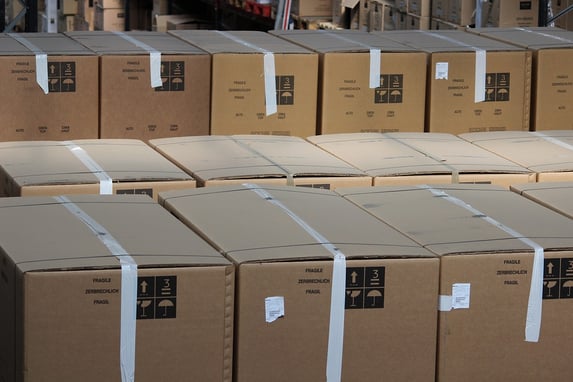
Is everything in your warehouse accessible and in the right place? Is your warehouse team able to carry out their tasks efficiently? If the layout design of your warehouse isn’t helping to allow the productivity of your staff and reduce your overheads, your warehouse storage layout design may need to change.
In order to have the highest possible efficiency, you must ensure that every square foot is being properly used to its full potential. The first step to achieving this is to assess your space.
Metrics You Need To Track
There are three things you need to know in order to accurately assess your warehouse space: its working capacity both storage and throughput, its storage utilisation and its theoretical storage capacity.
The working storage capacity of your warehouse is an unknown to begin with, as this figure is dependent on its utilisation and theoretical storage capacity you have. The throughput capacity is harder to identify as there are many variables such as number of doors, working / marshalling areas, order profiles, product profiles etc.
The utilisation of your warehouse is the amount of space that is actually getting used, and its theoretical storage capacity is based on the amount of physical space your warehouse has for storage. There is no magic formula for getting the numbers.
What it comes down to is understanding what a full warehouse means for you and your business. Once you know this, you will be armed with the knowledge you need to improve your warehouse storage layout design and implement some, or all, of the solutions below.
Functional Areas
If the activity in your warehouse is not as fast-paced or dynamic as you need, a likely culprit could be the design of your layout. One way to get your warehouse running at top speed is to create well-defined areas segments. This can be done using any number of methods. For example, to separate returned products from the rest of stock, they could be placed in a separate area and enclosed with a fence and easily-readable signage. Taking steps like these to create functional areas in your warehouse will prevent, for instance, returned items from being mistaken for stock and staff from entering incorrect or restricted areas, both of which can waste time.
An Aisle System
You can increase the accessibility of products, and ultimately increase warehouse efficiency, by potentially adding cross aisles to your warehouse layout. A logical aisle system will allow staff to move more easily around your warehouse using optimum routes. Unlike incredibly long aisles which require travel along their full length to get to the next product or another warehouse area, a system that incorporates cross aisles will create a grid that allows staff faster access to destination without unnecessary travel.
Provide A Path
In addition to having an efficient aisle system, your order pickers should have a clear path, travelling in a pre-defined direction. When order pickers have the efficiently routed instructions they need and a well defined pick locations, they will be more likely to fill orders correctly and efficiently the first time round.
An efficient path will begin as as close to where pick pallets /cages etc. are sourced, and end potetially at the despatch area. Pickers will ideally only need to travel, as a maximum, the length of your warehouse once to pick an order, if this is not the case either the pick routing from your WMS or your product locating are not working efficiently.
A Space For Special Packages
Some inventory items take longer to get to the shipping area due to their weight or fragility. However, this time can be reduced by having an area dedicated to these products, and might be best placedi right next to your despatch area. This will allow quicker movement of special items to shipping. It is important to ensure this space is kept as compact as possible, otherwise it may take up more warehouse space than you may be able to afford.
Change Receiving /Despatch Area Size(s)
Your goods receiving area is one of the most crucial parts of your warehouse. To that end, it should allow enough room for staff to do what they need to do without obstructions. Increasing the size of your receiving area will allow staff more room to, tip loads, process inventory and break down containers and pallets, thereby greatly increasing efficiency in this area. Opening up receiving will also ensure fewer slip and trip hazards, which will also increase the safety of everyone entering and working there. The reverse is also true for the despatch area.
Although there is no single solution that will work for every warehouse, the many available options to increase the efficiency of your warehouse’s existing space means there is often no need for a significant investment into expansion.


